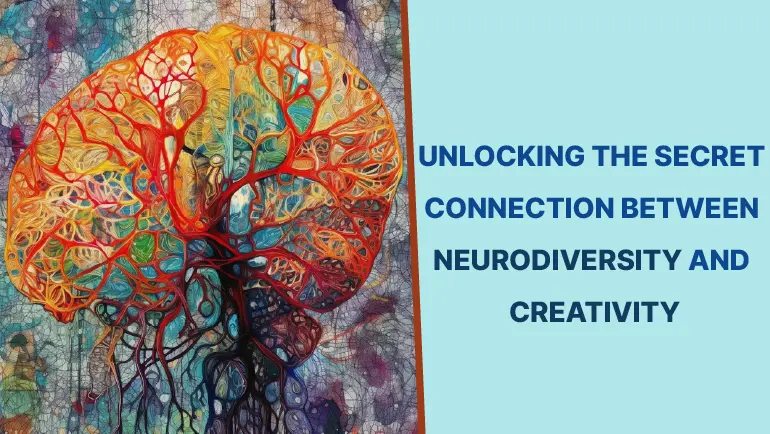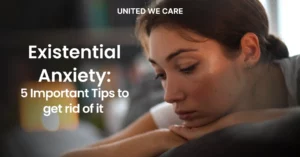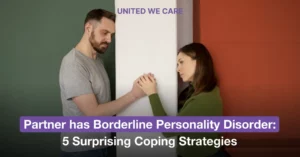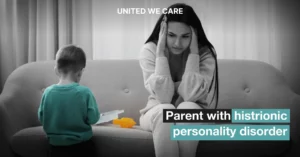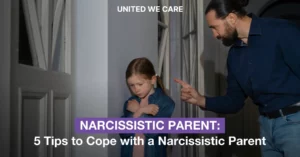Introduction
When we talk about diversity, we usually stick to gender or race. But did you know there is another form of diversity that needs acknowledgment? Neurodiversity. Neurodiversity is a term for the differences in the functioning of the human brain. Not all brains work in the same manner. While most of us have typical brains, some individuals, usually those who are diagnosed with ADHD, SLD, or ASD, have minds that function in significantly different ways. For instance, if you have a neurodivergent brain and have autism, you might be focusing on details in your surroundings much more than a neurotypical brain, which will likely ignore most of the details. In recent years, as research on neurodivergence has grown, people have realized that there is a connection between neurodiversity and creativity. What this connection is and how this connection works are some questions we will answer in this article.
What is Neurodiversity?
The word Neurodiversity or Neurodivergence came in the late 1990s. Before that, the dominant belief was that people with diagnoses of neurodevelopmental conditions like ADHD are different and disordered. The proponents of neurodiversity began advocating for accepting the differences but removing the idea of disorder from these differences. In other words, understanding that people with conditions like autism, ADHD, or learning disability perceive the world around them differently [1] [2].
If we take the example of dyslexia, some researchers suggest that people with dyslexia use the right hemisphere in reading. The right hemisphere is quicker in the processing of pictures, symbols, and visual stimuli, but the processing of the sound-symbol relationship is slow. Those with typical brains will use this sound-symbol relationship to read instead of processing pictures. So, when individuals with dyslexia struggle with reading, it is not a disorder, it is just a different way in which their brain works [3].
The concept of neurodiversity destroys the traditional notion of seeing individuals with neurodevelopmental disorders as disabled. Instead, it embraces the idea that these differences are natural variations and alternative ways of experiencing the world [1]. In this perspective, neurodivergence is like other forms of diversity, such as race or physical characteristics.
What is the Connection Between Neurodiversity and Creativity?
Creativity is the genesis of innovation and inventiveness and requires a person to look at the same thing from different perspectives. The dual pathway model of creativity divides it into two parts: cognitive flexibility, which is the ability to generate different perspectives or approaches, and cognitive persistence, which is the sustaining of attention toward a task [4].
Neurodivergents have these capacities mentioned above in a manner that is different from people with neurotypical brains, allowing them to come up with creative solutions. Since a range of conditions come under the umbrella term of neurodiversity, different individuals may have different capabilities.
- Autism and Creativity: Some neurodivergents are more likely to pay close attention to patterns and be detail oriented. For instance, autistic traits, including sensory hypersensitivity, attention to detail, and a tendency to hyper-systemize the world, become helpful in enhancing cognitive persistence and coming up with creative solutions and insights when solving a problem [4]. Other researchers also consider the ability to process sound in higher quality and tones by autistic individuals as a strength that may give them artistic abilities for musical creations [2].
- ADHD and Creativity: A link also exists between ADHD and creativity, as low attention control allows for greater divergent thinking. This enhances cognitive flexibility, and they develop newer associations [4]. Their diverging ability can result in unconventional and inventive ideas that may not occur to neurotypical individuals. Another expected outcome of ADHD is having hyperfocus on tasks and things deemed enjoyable for a person, which enhances cognitive persistence and increases productivity and creativity [4].
- Dyslexia and Creativity: Further, since individuals with dyslexia have better visual-spatial processing, they can visualize relations and patterns much more than neurotypicals [3]. Research claims that dyslexic individuals are more likely to study art and have shown artistic and creative approaches to learning and creating art [2].
Essentially, neurodiversity can be a strength when it comes to creativity. It is a different way of being and interacting with the world, which makes the neurodivergent individual find innovative ways to connect with stimuli that neurotypicals take for granted. Neurodiversity promotes divergent thinking, and in turn, it fosters creativity.
Must read- Neurodivergence
What Are Some Examples of the Connection Between Neurodiversity and Creativity?
The linkages between neurodiversity and creativity are coming up both in research and in the narratives of famous individuals.
In a recent study by Axbey and colleagues, participants were divided into pairs and put into two categories: single-neurotype group (either two neurotypical individuals or two neurodivergent individuals with the same condition) and neurodiverse group (where one neurotypical and one neurodivergent individual was present). They had to take turns building towers with the given materials so that when one individual performed, the other observed. Later, independent raters compared the towers based on similarities. It was found that in the neurodiverse group, there were the most minor similarities. This research makes a strong advocate of how having neurodiversity in a group can lead to more novel solutions and innovative solutions [5].
Organizations worldwide are becoming aware of this fact. One example to illustrate this is the recent LinkedIn towards making “Dyslexic Thinking” an official skill [6]. Dyslexic thinking is a term that is given to the combination of skills that people with dyslexia have, such as higher awareness of the environment, processing pictures, being more imaginative and intuitive etc [7]. These skills make them more effective in a number of areas like problem-solving, creativity, leadership, etc [8].
The advocacy for the term neurodivergence and these relationships are not just on paper. Many individuals who are neurodivergents have made their creative mark on the world. For example, Stephen Wiltshire is an artist with autism who is renowned for his exceptional talent of accurately drawing detailed landscapes solely from his memory. He can take one look at a landscape and then produce it in an exceptionally accurate manner [9]. Artists like Justin Timberlake and Channing Tatum have also spoken up about their lives with ADHD [10]. Even Steven Spielberg, Whoopi Goldberg, and Jennifer Aniston have talked about their dyslexia [11]. None of these individuals had it easy growing up, but their neurodivergence helped them to become who they are in one way or another.
Read more about- Urgency Culture
Conclusion
To many people, a diagnosis of a developmental disorder feels like the end of the world. But neurodiversity can actually be a strength if nurtured properly. Neurodiversity and creativity have a fascinating connection for sure. The ability to think differently is heightened for neuordivergents and when given the right space and resources, they are able to produce unique and innovative expressions of creativity, a fact which is as much research backed as it is backed by popular narrative.
If you are diagnosed with a condition falling under neurodiversity or wondering yourself to be the one, contact the experts at United We Care. United We Care’s experts are committed to providing the best solution for your overall well-being.
References
- S. Tekin, R. Bluhm, and R. Chapman, “Neurodiversity Theory and its Discontents: Autism, Schizophrenia, and the Social Model of Disability,” in The Bloomsbury Companion to Philosophy of Psychiatry, London: Bloomsbury Academic, 2019, pp. 371–389
- L. M. Damiani, “Art, design and neurodiversity,” Electronic Workshops in Computing, 2017. doi:10.14236/ewic/eva2017.40 [green]Armstrong, Neurodiversity: Discovering the Extraordinary Gifts of Autism, ADHD, Dyslexia, and Other Brain Differences. Accessible Pub. Systems, 2010.
- T. Armstrong, Neurodiversity: Discovering the Extraordinary Gifts of Autism, ADHD, Dyslexia, and Other Brain Differences. Accessible Pub. Systems, 2010.
- E. Hayashibara, S. Savickaite, and D. Simmons, Creativity and neurodiversity: Towards an inclusive creativity measure for autism and ADHD, 2023. doi:10.31219/osf.io/4vqh5
- H. Axbey, N. Beckmann, S. Fletcher-Watson, A. Tullo, and C. J. Crompton, “Innovation through neurodiversity: Diversity is beneficial,” Autism, p. 136236132311586, 2023. doi:10.1177/13623613231158685
- K. Griggs, “Dyslexic thinking is now officially recognised as a valuable skill!,” LinkedIn, https://www.linkedin.com/pulse/dyslexic-thinking-now-officially-recognised-valuable-skill-griggs/ (accessed May 31, 2023).
- “Dyslexia – 8 basic abilities: Dyslexia the gift,” Dyslexia the Gift | Davis Dyslexia Association International, https://www.dyslexia.com/about-dyslexia/dyslexic-talents/dyslexia-8-basic-abilities/ (accessed May 31, 2023).
- “Celebrate the limitless power of dyslexic thinking,” Microsoft Education Blog, https://educationblog.microsoft.com/en-us/2023/04/celebrate-the-limitless-power-of-dyslexic-thinking (accessed May 31, 2023).
- “Stephen Wiltshire,” Wikipedia, https://en.wikipedia.org/wiki/Stephen_Wiltshire (accessed May 31, 2023).
- ADDitude Editors Medically reviewed by ADDitude’s ADHD Medical Review Panel Updated on January 25, Add. Editors, and Add. A. M. R. Panel, “Famous people with ADHD,” ADDitude, https://www.additudemag.com/slideshows/famous-people-with-adhd/ (accessed May 31, 2023).
- “10 celebrities with dyslexia,” WebMD, https://www.webmd.com/children/ss/slideshow-celebrities-dyslexia (accessed May 31, 2023).

